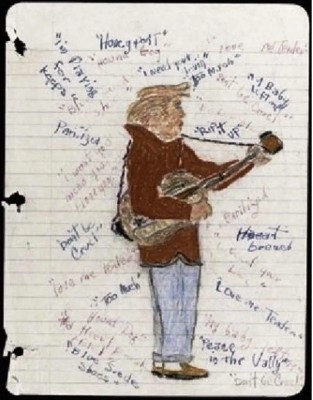10 Random Bits of Trivia For Your Brain
Boost Your Knowledge with These 10 Mind-Blowing Trivia Nuggets!
The Origin of the Word "Trivia"
First up on our eclectic list is the origin of the word "trivia." Trivia comes from the Latin "trivium," meaning "three roads." Back in ancient Rome, this referred to the three-way intersection of three roads where people would gather and chat about various topics.
Fun Fact: The term “trivia” was popularized as a word to describe insignificant or random bits of information by the book "Trivia" authored by Logan Pearsall Smith.
Intriguing Quote:
“Trivia is a way of life. It’s such a curiosity; why do we know what we know, and why do we not know what we don’t know?” - Alex Trebek
Dragons in Chinese Mythology
Delve into the mystical world of Chinese mythology with a look at dragons. Unlike their Western counterparts, dragons in Chinese culture are revered and considered symbols of power, strength, and good luck. In fact, the Chinese New Year is often associated with dragon parades to bring in good fortune for the coming year.
Did you know? The Chinese dragon is often depicted with five claws, symbolizing the emperor. Dragons with fewer claws were reserved for the nobility and common citizens.
Fun Fact: In Chinese culture, dragons are believed to control weather elements such as rain, floods, and typhoons.
Mona Lisa's Elusive Smile
The enigmatic smile of Leonardo da Vinci's Mona Lisa has baffled art enthusiasts for centuries. Some speculate that the smile changes depending on the viewer's angle or mood, adding to its mystique. This subtle expression is a masterpiece in itself, capturing the essence of the Renaissance art movement.
Trivia Alert: The Mona Lisa's gaze never meets the viewer's eyes directly, adding to the sense of intrigue surrounding the painting.
Artistic Insight: Leonardo da Vinci took over 10 years to complete the Mona Lisa, showcasing his meticulous attention to detail and perfectionism.
The Great Wall of China
The Great Wall of China stands as a testament to ancient engineering marvels, spanning over 13,000 miles across rugged terrain. Contrary to popular belief, the wall is not a continuous structure but a series of walls, fortifications, and natural barriers built over centuries. It served as a defense mechanism against invasions and raids.
Did you know? The Great Wall was not just a barrier; it was also used for border controls, allowing the imposition of duties on goods transported along the Silk Road.
Fascinating Fact: Over a million people reportedly died during the construction of the Great Wall of China, leading to its grim reputation as one of the world's largest burial grounds.
The Discovery of Penicillin
Sir Alexander Fleming's accidental discovery of penicillin revolutionized medicine and saved countless lives. In 1928, Fleming returned from a vacation to find a moldy petri dish that led to the identification of penicillin, the first antibiotic. This chance encounter laid the foundation for modern antibiotics.
Achievement: Fleming's serendipitous discovery paved the way for the development of numerous life-saving antibiotics, transforming the field of medicine.
Medical Milestone: The discovery of penicillin marked a turning point in the treatment of bacterial infections, ushering in a new era of infectious disease management.
The Intriguing Bermuda Triangle
The Bermuda Triangle, a region in the western part of the North Atlantic Ocean, has been shrouded in mystery due to numerous aircraft and ship disappearances. While some attribute these incidents to paranormal activity or extraterrestrial interference, scientific explanations point to natural phenomena such as methane gas eruptions and unpredictable weather patterns.
Curiosity Corner: The Bermuda Triangle spans roughly 500,000 square miles and is also known as the "Devil's Triangle."
Debunking Myths: Despite its sinister reputation, the Bermuda Triangle is a busy shipping lane and air route with many vessels safely navigating through its waters.
The Enigmatic Stonehenge
Steeped in mystery, Stonehenge is a prehistoric monument in Wiltshire, England, believed to have been constructed around 2500 BC. The purpose of this iconic stone circle remains a subject of debate among archaeologists, with theories ranging from astronomical observatory to religious site or burial ground.
Ancient Enigma: Stonehenge's massive stones, some weighing up to 25 tons, were transported over great distances without the aid of modern machinery, showcasing the ingenuity of ancient civilizations.
Historical Puzzles: Despite decades of research, the true intentions behind the construction of Stonehenge continue to intrigue and mystify scholars and visitors alike.
The Humble Potato's Global Impact
From its humble origins in South America, the potato has become a staple food crop worldwide. Potatoes were first introduced to Europe in the 16th century and quickly gained popularity due to their nutritional value and versatility in cooking. Today, the potato is a vital component of diets across the globe.
Culinary Evolution: The potato revolutionized European diets, combating famine and providing a reliable source of nutrients for millions of people.
Food for Thought: The potato's adaptability to various climates and soil types has made it a resilient and valuable agricultural commodity on a global scale.
The Intricate Language of Bees
Delve into the world of bees and their intricate language of dance. Through a series of complex movements known as the waggle dance, worker bees communicate valuable information about food sources, including distance, direction, and quality. This sophisticated form of communication is crucial for the survival and efficiency of the hive.
Nature's Wonders: The waggle dance was first decoded by Austrian scientist Karl von Frisch, who received the Nobel Prize in Physiology or Medicine in 1973 for his groundbreaking research on bee communication.
Bee Facts: Bees perform different variations of the waggle dance to indicate the location of flowers or water sources, showcasing their remarkable ability to convey precise information to their fellow bees.
The Curious Case of the Sphinx's Missing Nose
The Great Sphinx of Giza, a colossal limestone statue with the body of a lion and the head of a human, has puzzled historians with the mystery of its missing nose. While theories abound regarding the nose's disappearance, ranging from Napoleon's soldiers using it for target practice to religious iconoclasm, the true reason remains elusive.
Historical Riddle: The missing nose of the Sphinx has sparked numerous legends and urban myths, adding to the allure and enigma of this ancient monument.
Archaeological Speculation: Despite extensive research and excavation around the Sphinx, the exact circumstances leading to the loss of its nose remain a subject of speculation and intrigue.
Get Free Gifts & Best Stories!
Join our newsletter to get our top stories of the month and free merch.
- 📚 Cool Stories: Read stories you won’t find in textbooks.
- 🎁 Free Gifts: Get exclusive stickers, t-shirts, and more!
Only 1 email a month. No spam, we promise!

